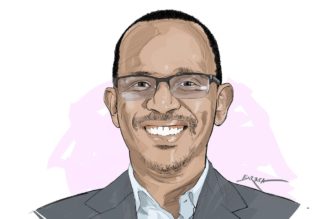Columnists
Kenya has what it takes to become a top medical tourism destination
Friday January 26 2024

A patient undergoes cancer screening at the Integrated Molecular Imaging Center (IMIC) located at the Kenyatta University Teaching Referral and Research Hospital on January 10, 2022. PHOTO | LUCY WANJIRU | NMG
Kenya’s healthcare presents a paradox. There is a steady exodus for specialised treatments abroad, at the same time there is an influx of patients seeking Kenya’s specialised skills from the region.
A total of 569 patients were sent abroad for specialised care between 2021 and 2022, with India accounting for most of these referrals. In particular, 462 referrals or four out of every five patients, went to India, accounting for an outstanding 81.2 percent. Singapore, South Africa, and Israel are other markets where Kenyans sought specialised treatment.
The most common treatment sought abroad was open heart surgery (71 patients), followed by stem cell replacements (44) and bone marrow transplants (29). Other notable treatments were kidney transplants (11), liver transplants (21), radiotherapy (26), and arterial switch operations (20). Notably, 19 patients sought medical evaluation for wellness, diagnosis and alternative treatment options, and 17 travelled for chemotherapy.
The wide range of treatments sought highlights the equally diverse needs of people travelling abroad for medical care. Reasons advanced for India as a preferred destination for medical referrals include its perceived professional medical care at more affordable prices when compared to other markets.
While Kenyans seek advanced treatments overseas, Kenya paradoxically enjoys a strong reputation among its East African neighbours, attracting referrals from Tanzania, Uganda, South Sudan, Rwanda, Burundi, and Ethiopia. Additionally, its expertise draws patients from further afield, with referrals from Nigeria and even the Democratic Republic of Congo. According to the Ministry of Health, Kenya gets 3,000 to 5,000 medical tourists from other African countries.
Patients from these countries sought specialised treatment from both public and private hospitals. The Moi Teaching and Referral Hospital (MTRH), for example, received 250 patients from neighbouring countries seeking specialised treatment. Many others were treated in various public and private health facilities.
This demonstrates that Kenya can position itself as a leading regional medical tourism destination in East Africa and beyond, attracting patients from around the world and stimulating growth across multiple sectors. In addition to helping the healthcare sector, the ensuing economic growth would empower communities, generate new employment opportunities, and advance Kenya’s overall development.
The private sector will also play a key role in investing in advancing medical tourism in the country.
As we navigate through 2024, let us accelerate plans for a thriving medical tourism market in Kenya. If successful, a thriving medical tourism market would uplift lives and livelihoods.
Dr Kariuki is the KPMDC CEO.









